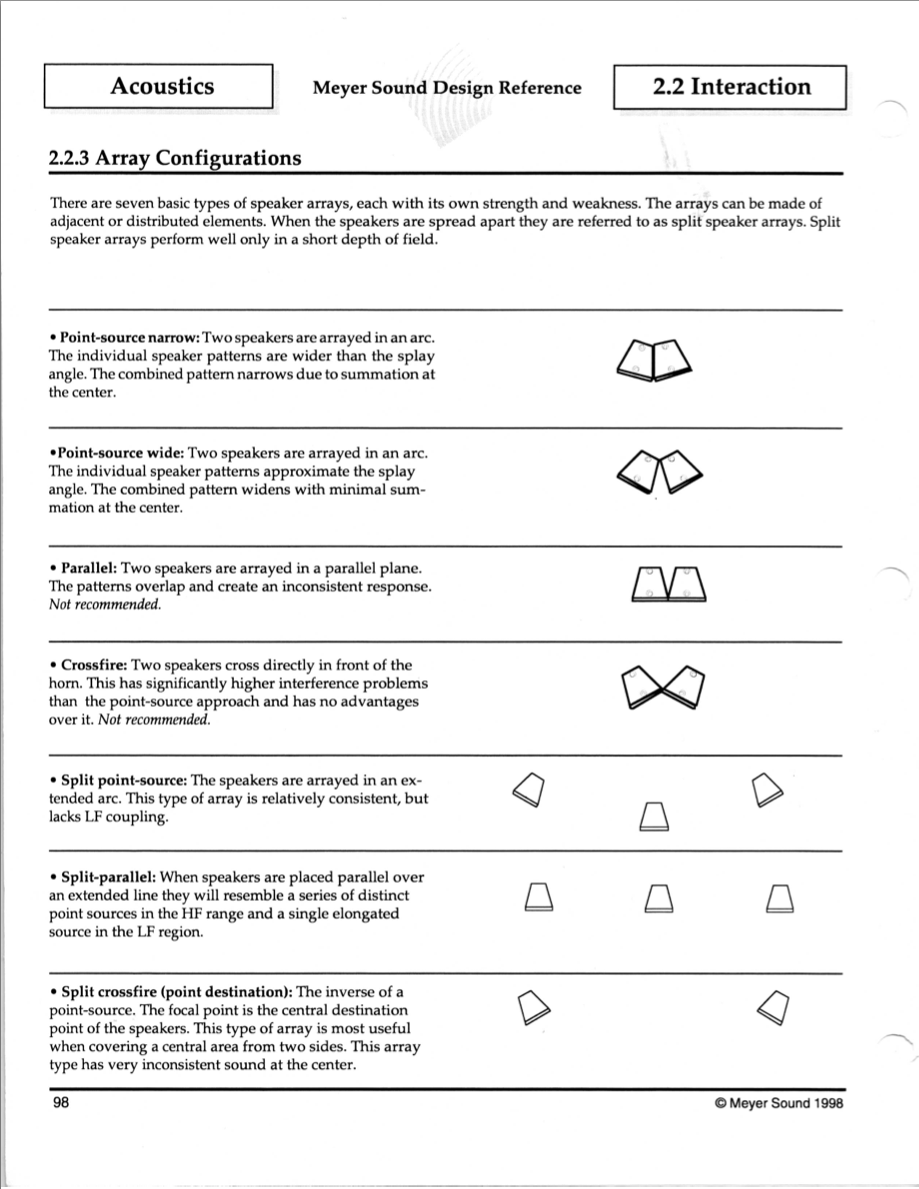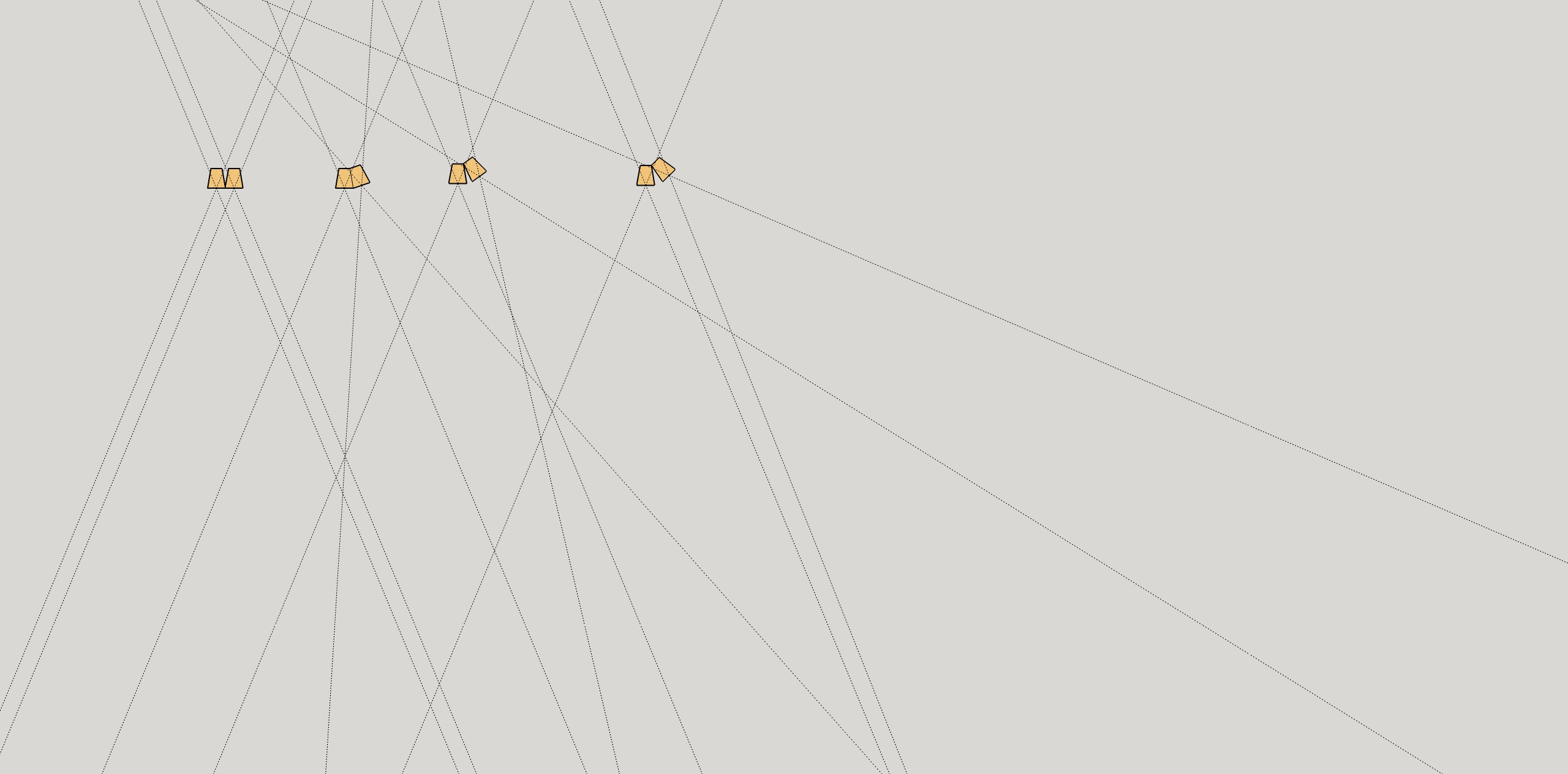I recently posted about the EAW KF-850 and thought I would do some homework regarding how those cabinets work as an array and whether or not the tight pack I’ve seen is actually the right array configuration or not.
For those who missed it, here is a link to my first post about the EAW KF-850.
Google has a free 3D CAD tool called SketchUp that I’m using to do the experimentation. Amazing tool!
With some basic measurements, you can quickly make a speaker box once you know the dimensions of a cabinet. Once drawn, you can make that speaker box into a component that you can paste and rotate as an object. Then it’s a matter of wrapping your head around the various tools to SketchUp offers to make a multi speaker array which includes the move and rotate tool.
Here is the EAW KF850 array I’m working on.
Since you can measure angles with SketchUp, I’m trying to see how the horns of the KF850 interact and whether or not the splay angle built into the trap of the box is actually ideal and to learn how many degrees of overlap there are.
Obviously two cabinets that are side by side must be splayed for optimal overlap or the result can be severe comb filtering. A KF850 has a 55×40 degree horn. The cabinet itself has a 19 degree offset per side of the trap which means the cabinets when butted together are splayed by 38 degrees. With the horn dispersing 22.5 degrees in each horizontal direction, 19 degrees is a bit less than that. The question to answer is if that is right or not. We know that not always are decisions about making speakers based on good science. When it comes to splaying cabinets a few things are obviously just plain wrong.
In The Meyer Sound Design Reference book it explains the various names for different types of arrays.
Here is a sample of that text that shows those configurations and descriptions.
Obviously “parallel” and “crossfire” configurations are off the table. This leaves “point source narrow” and “point source wide”. If you’ve read the description of the “point source narrow” you’ll glean that it’s not ideal either.
We’re left with “point source wide” and the obvious question is “how wide?”
Here is my latest SketchUp model. Click on it to make it bigger.
Obviously the “parallel” and “point source narrow” options are no good. The last attempt was to try to get the dispersions to parallel each other but obviously this leaves a hole. This might be great if there was an isle right in the gap but let’s assume that there does need to be some overlap. Again, “how much?”
I’m on the hunt for a clear answer.
More soon…




